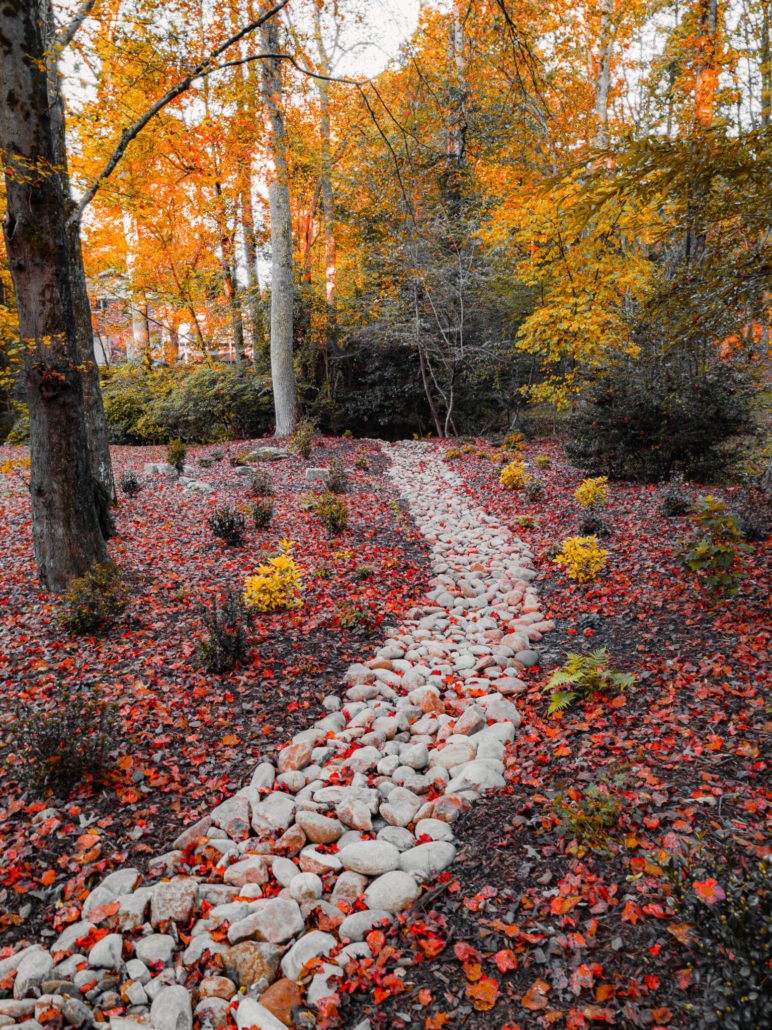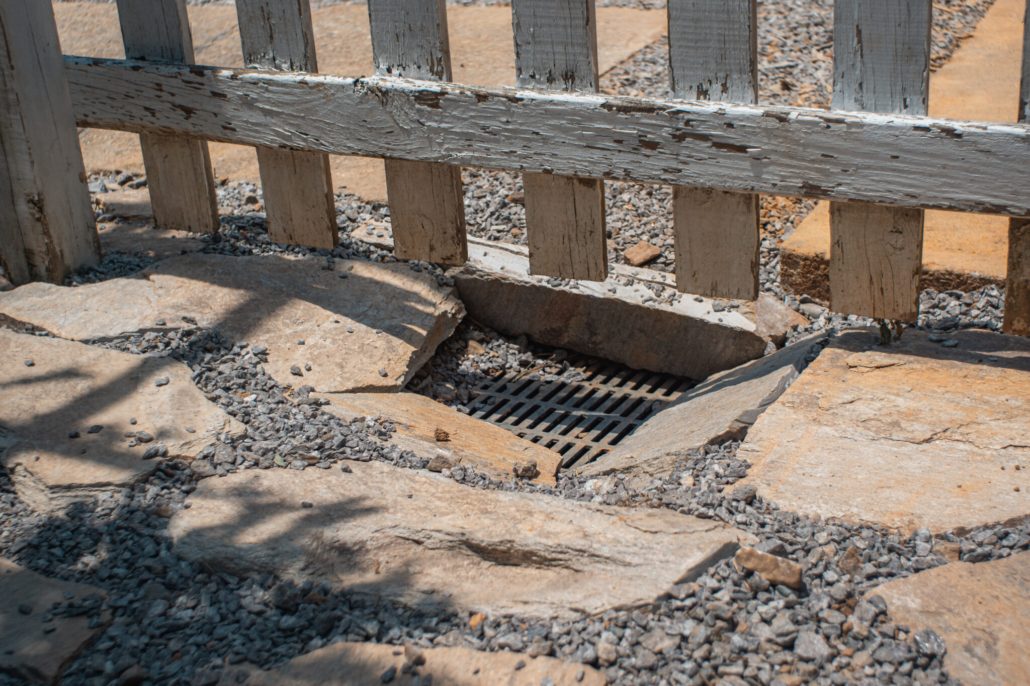Stormwater runoff can be improved around the house by building a French Drain. A French drain is a sloped channel packed with piping and gravel to divert water runoff. Water will travel to the lowest point pulled by gravity. Often in the mountains, swift currents of surface water will erode the ground forming trenches carved out in the soil. If observed, this is an indication of the flow of water and slope of the land. Placed in the correct location to collect this flow, a French drain can help with alleviating erosion. French drains collect the water naturally and effectively relocate to a desired drainage location.
When to Install a French Drain
French drains are used to alleviate surface water and protect house foundations and basements. The clay soils of western North
Carolina soak in water and drain very slowly . This water builds up against foundations and basements causing hydrostatic pressure to build. Too much pressure can deteriorate foundation walls. If cracks are apparent, a trained professional licensed landscape contractor can evaluate the flow of water and give suggestions on how to remedy the situation.
When building a retaining wall, it is necessary to build a French drain behind the structure to eliminate hydrostatic pressure on the wall. Extending this drain the whole length of the wall with an outlet will keep the wall stable and free of water undermining the foundation and putting undue pressure on the wall.






